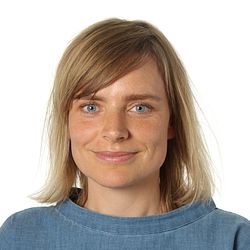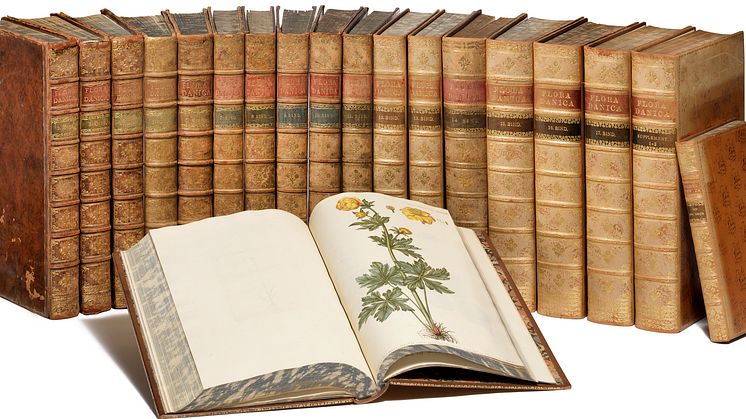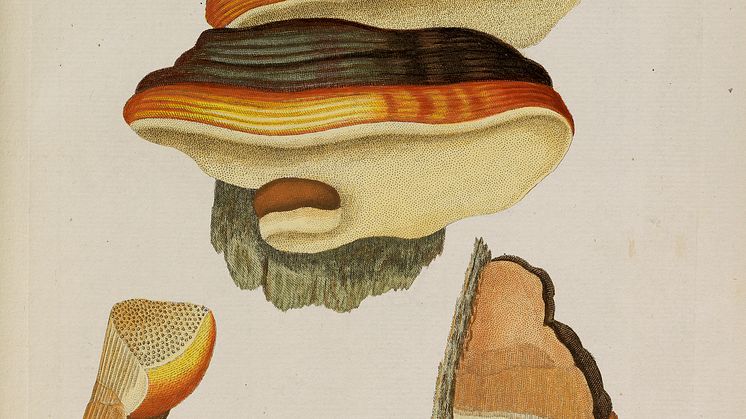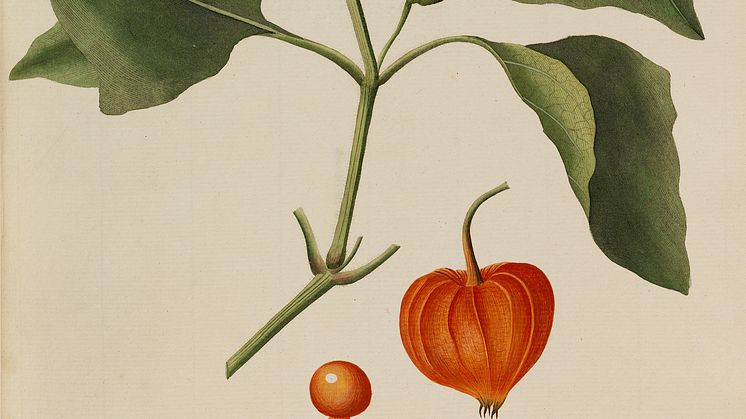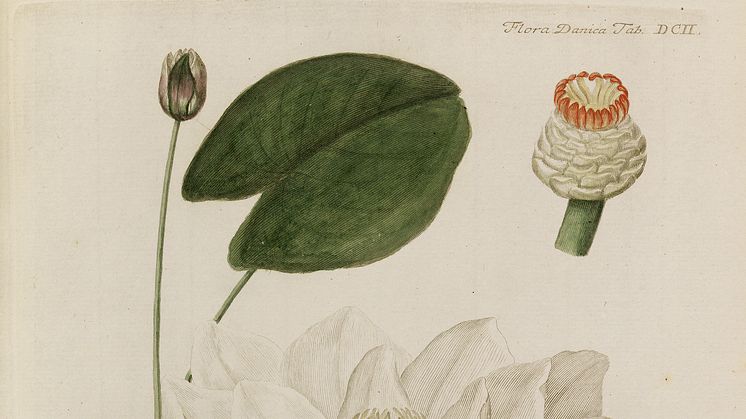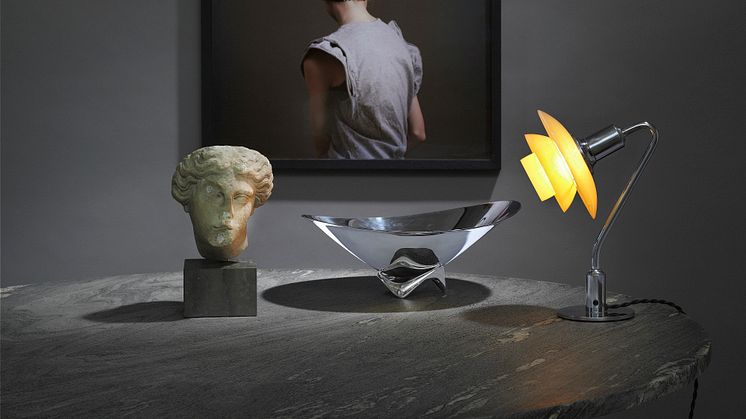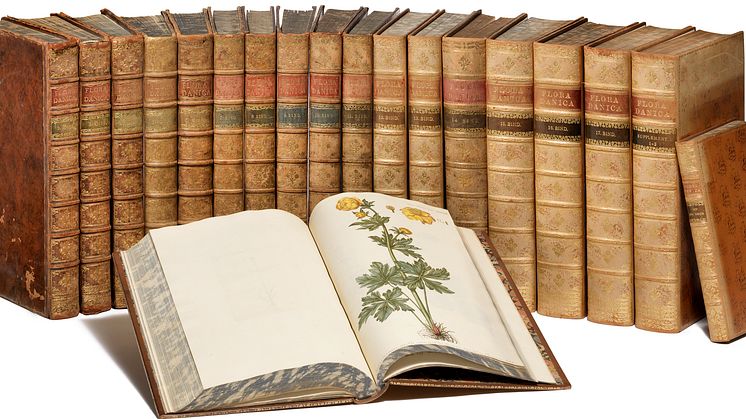
Press release -
The World's Largest and Most Beautiful Work on Flora up for Auction
The year's first Live Auction at Bruun Rasmussen Auctioneers in Copenhagen includes a copy of the Flora Danica work. It is extremely rare to see complete versions of this botanical work on the market. The project began in 1761 with a plate depicting a cloudberry and a prospectus supported by the Danish King Frederik V. More than 120 years later, the magnificent Flora Danica was finally completed, and ever since, the iconic work has enjoyed the status of the world's largest and most beautiful publication on flora.
A (Delayed) Child of the Enlightenment
With its impressive 3240 plates published in booklets between 1761 and 1883, Flora Danica is not just the world's largest publication on flora, but also the work that has taken the longest to complete in the history of Denmark. The plan was initially that the project would take 10 years to finish. The idea arose at a time where all of Europe was focused on collecting and recording findings from the natural world, and thus the purpose of the project was entirely in the spirit of the Enlightenment. The goal was to expand the individual person's knowledge of plants and the many uses of them. At this time, the dependency on plants was still significant. Through a firmer knowledge of both the useful and harmful properties of the wild plants, the use of the local resources could be optimized, which in the end would benefit the country's overall economy. Flora Danica was published in "The Language of the Country, Danish and German", however, the work was also published in the scholarly language of the time, Latin, to attract an international audience.
The Country's Finest Botanists
It was the German-born G.F. Oeder, who was responsible for the release of Flora Danica. Oeder was the first in a long line of editors-in-chief on the project and also Denmark's first professor of botany. Not long after he was appointed to his position in 1752, he began planning the publication project as well as the layout of a botanical garden at Amaliegade in Copenhagen. Both projects were intended to map out the Danish flora, which at that time included the flora of the duchies of Denmark, Norway, Iceland, the Faroe Islands and Greenland. After Oeder, nine different botanists headed up the work on the publication of the Flora Danica, including Theodor Holmskiold, the man who had the idea for the Flora Danica porcelain service – the magnificent hand-painted porcelain service decorated with pictures from the publication.
Scientists, Copper Printers and Illustrators in an Excellent Collaboration
Flora Danica was created in a collaboration between scientists, copper printers and illustrators. It was the publishers themselves who had to travel all over the country to gather information about the flora, and this work was not always easy. Just getting around Denmark at the time was extremely difficult, and if you were to visit Norway, it could mean a direct endangerment of your life. But additional help was eventually provided since the interest concerning the Flora Danica project continued to grow after the initial instalments had been published. More and more people submitted findings to the publishers or took part in the collection of plants. When a new plant had arrived, a watercolour was produced. The copper printers then incised the plates in accordance with the watercolour. After printing in black and white, the plates were hand-coloured with gouache which covered the black ink colour. Most of the copper plates from Flora Danica still exist and are located at the Natural History Museum of Denmark in Copenhagen. Some printing plates were lost after the fire of 1884 at Christiansborg Palace, because the plates were stored in the attic of the palace. These have subsequently been reproduced.
A Precious Publication
Today, one does not really know how many complete copies exist of the Flora Danica. Outside Denmark, the work is known to exist in 13 copies. In his time, the King ordered 55 copies to be made, which were distributed among bishops, prefects, selected scientific institutions, scientists, and the nobility. Today, complete copies of the botanical work are very rarely seen on the market.
Auction: Tuesday 26 February at 4 pm CET on Bredgade 33 in Copenhagen
Preview: 21-25 February at the same address
View all the lots of the book auction here
Topics
Categories
Bruun Rasmussen Auctioneers is one of Scandinavia’s leading international auction houses, and one of Denmark’s oldest. It all started on 6 October 1948, when Arne Bruun Rasmussen conducted the first traditional auction in the saleroom at Bredgade 33 in Copenhagen. Today, Jesper Bruun Rasmussen stands at the helm of the family-run business together with the third generation of the family, his son Frederik and daughter Alexa, and the company’s CEO Jakob Dupont.
In 2004, the first online auction was launched, and today the auction house has expanded to include departments in Copenhagen and Aarhus and representations in Sweden, Germany, England, France, Belgium, Luxemburg, Spain, Italy, Thailand and the US. About 100,000 lots are put up for auction each year at the traditional auctions and daily online auctions. Here you can bid on everything from art, antiques, modern design and jewellery to books, coins, stamps, wine and weaponry.

